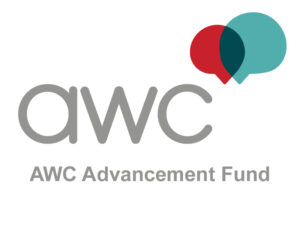If a communicator decides to go freelance, which career path is more likely—
- having more freedom but less financial stability as she lives paycheck to unpredictable paycheck, or
- creating more security and more income than she would in a 9-to-5 job?
Both outcomes are possible.
The Gig Economy Is Real
The economics of freelancing are shifting, as all the talk of the “gig economy” indicates.
Robert McGuire of Nation1099 estimates that in 2018 “approximately 11 percent of the working adult population in the U.S. are working primarily as full-time independent contractors in the gig economy.”
Some of them—about 14 percent, according to McKinsey Global Institute—would prefer to
have traditional full-time jobs. But 30 percent consider themselves “free agents” and would
never work for someone else again.
Finding Success

According to McKinsey, only 16 percent of freelancers fall into the category of “financially
strapped” contractors struggling to make ends meet.
If your dream is to live off your royalties as a full-time writer, you might become a financially strapped freelancer. Author Federico Pistono advises, “Most people don’t make any money writing books, and chances are you won’t be part of the 0.01% that makes it.” According to his math, a first-time author with a best-seller—50,000 books—would typically make “just about enough for one/two months of living, but spread across 10 years.”
Some freelancers do struggle, but many earn more as independents than they would working as an employee. Among top freelance earners, one in five brings in more than $100,000 a year. The 2018 MBO State of Independence survey found that the median household income in the U.S. is $59,039; the average annual income of a full-time freelancer is $69,100.
In general, the opportunities for earning a good livelihood as a freelancer are trending upward every year, and 74 percent of freelancers consider freelancing to be the “ideal
employment situation.” However, some economic realities haven’t changed.
Keep the Pipeline Flowing
Freelancing can free you to do work that fits your passion, but the downside is that you have to find that work. Even as you’re finishing your current gig, you need to be negotiating your next project. Each time your pipeline slows, your income drops. Long-term freelancers know that their business tends to follow feast-or-famine cycles: one week, they may have more work than they can take on; the next, clients may be cutting back spending on any new projects.
Five Strategies
Successful freelancers have a number of strategies for dealing with this feast-or-famine cycle.
- Run the numbers. You’re paying quarterly taxes, providing your own health insurance, and contributing to your retirement. Your rates need to reflect that. For an overview of how to set your rates, see Ed Gandia’s “What’s the Bare MINIMUM You Should Be Charging Your Clients” or Ryan Robinson’s “Infographic: How to Calculate Your Freelance Hourly Rate.”
- Learn the business. What licenses do you need, if any? What credentials do potential clients expect? Where does your target audience look for contractors in your field?
- Network. Build relationships with potential clients, people who can refer you to potential clients, and fellow professionals who can partner with you on big or complex projects.
- Plan how you will deal with both parts of the feast-or-famine cycle. When you have too much work, will you hire subcontractors, find a partner, or refer jobs to your network? When your pipeline slows, what reserves will carry you through until you land new projects? How will you find new gigs?
- Realize you can freelance while working a traditional job. McKinsey categorizes 40 percent of freelancers as “casual earners” who take on freelance projects to supplement their income.
Resource for the Latest Trends
Freelancing isn’t for everyone, but the number of independents is growing, as is their contribution to the U.S. economy. For an in-depth discussion of the latest trends in freelancing, check out Robert McGuire’s Ultimate Guide to Gig Economy Data: A Summary of Every Freelance Survey We Can Find.
About the Author

Cecelia Munzenmaier is a full-time freelancer who develops materials for textbook publishers and coaches business writers. Her books include Write More, Stress Less and Write Better eMails. She is a past president of the AWC Greater Des Moines Professional Chapter.

